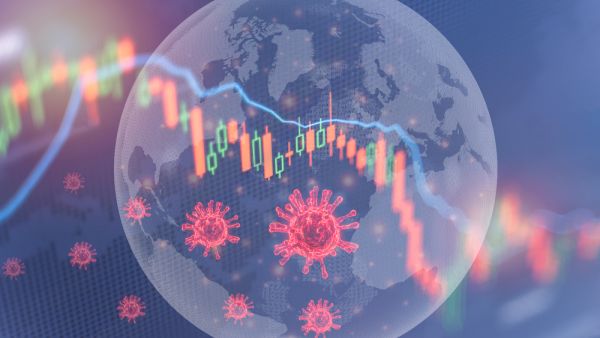Governments' extended coronavirus-containment measures are pushing the global economy into the deepest recession since the Great Depression, said S&P Global Ratings in a new report.
Although the drop in economic activity is expected to be sharp but fairly short, the path to recovery remains highly uncertain in its timing and trajectory until an effective treatment or vaccine are in place, said the report titled "Global Credit Conditions: Rising Credit Pressures Amid Deeper Recession, Uncertain Recovery Path”.
S&P Global Ratings lowered its economic forecasts for 2020 to reflect the extension of lockdowns and the prospects for a slower recovery.
“We now expect global GDP to shrink 2.3 percent this year, with contractions in the US and eurozone of 5.2 percent and 7.5 percent, respectively. Except for China, which suffered most in the first quarter, many major economies would be hit worst in April-June. We anticipate the recovery will be slow before gathering strength next year--but the 5.8 percent global growth we expect in 2021 would be insufficient to recover lost output,” S&P said in the report.
Corporate borrowers suffered first from the sudden economic stop and the collapse in oil prices, with a disproportionate effect on those at the lower end of the rating scale and in the most exposed industries. This comes after a record number of corporates came to market with first-time ratings in the 'B' category in the two to three years leading up to the current situation.
As a result of both new 'B' category ratings (which includes 'B-' and 'B+') and credit quality moving lower, we entered this downturn with median ratings at the lowest in the past decade in a large number of industries.
Pre-pandemic, 30 percent of corporates with a speculative-grade rating was in the 'B' category or below in the US and 20 percent in Europe, a rating level that indicates high vulnerability to changes in economic and financial conditions. We expect all of this to push the speculative-grade default rate above 10 percent.
Although economic forecasts continue to worsen, financing conditions have been gradually improving, bolstered in particular by the US Federal Reserve's historic liquidity facilities, pushing March corporate bond issuance to an all-time monthly high.
“Still, we see more-restrictive lending conditions amid the material contraction in economic activity. Thus far, borrowers with stronger credit quality have been able to largely resume issuing debt, while funding costs remain prohibitively high and access to funding more challenging for weaker borrowers in an environment of collapsing revenues,” S&P Global Ratings said in the report.
"Unprecedented fiscal and monetary support are critical to preserving the economic fabric and well-functioning capital markets, thereby supporting the chances of a stronger path to recovery," said Alexandra Dimitrijevic, global head of S&P Global Ratings Research.
"But it comes at the expense of higher government debt and puts the onus on policy choices in the handling of health issues, the degree and nature of support to the economy, and later on the exit path--all of which will have significant effects on the recovery trajectory."

Although economic forecasts continue to worsen, financing conditions have been gradually improving, bolstered in particular by the US Federal Reserve's historic liquidity facilities, pushing March corporate bond issuance to an all-time monthly high. (Shutterstock)
Highlights
S&P Global Ratings lowered its economic forecasts for 2020 to reflect the extension of lockdowns and the prospects for a slower recovery.







